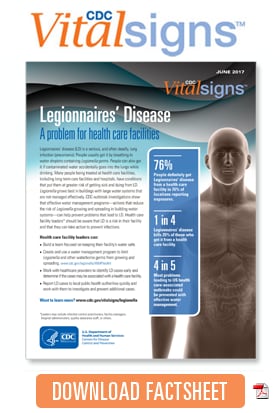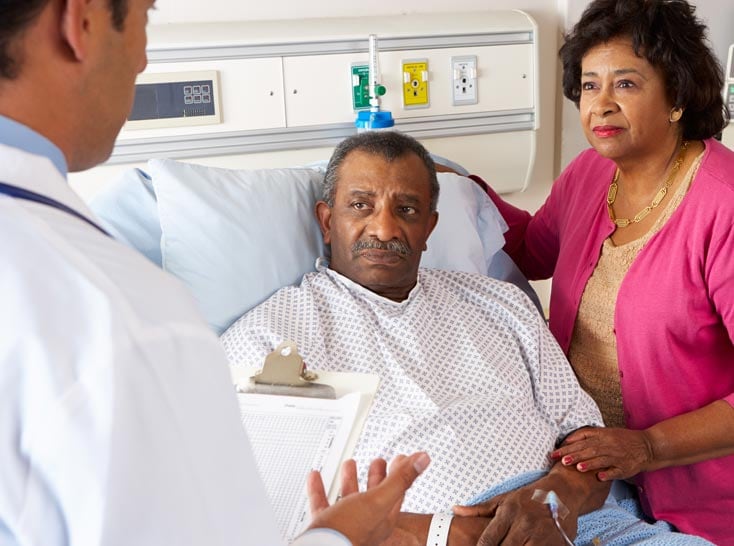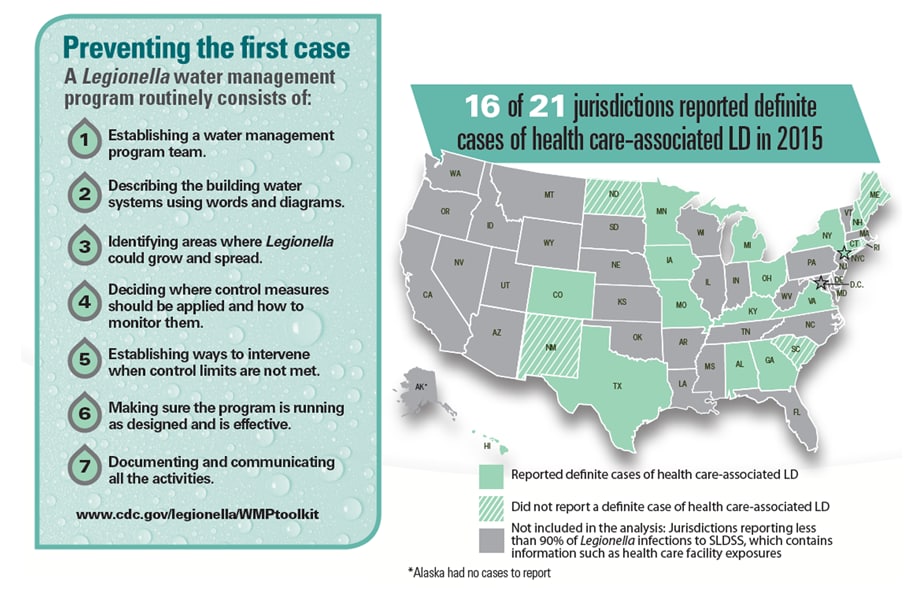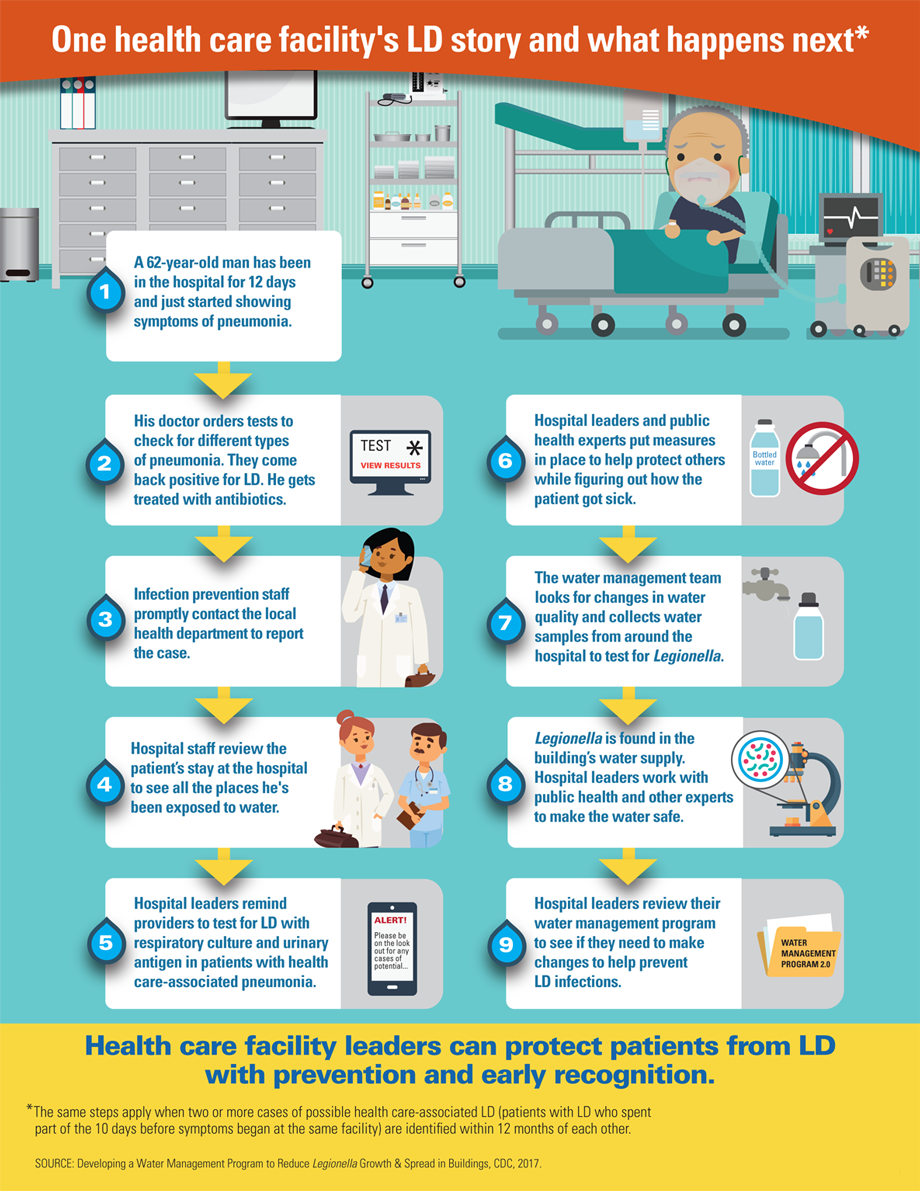
Legionnaires’ Disease
A problem for health care facilities
Overview
Legionnaires’ disease (LD) is a serious, and often deadly, lung infection (pneumonia). People usually get it by breathing in water droplets containing Legionella germs. People can also get it if contaminated water accidentally goes into the lungs while drinking. Many people being treated at health care facilities, including long-term care facilities and hospitals, have conditions that put them at greater risk of getting sick and dying from LD. Legionella grows best in buildings with large water systems that are not managed effectively. CDC outbreak investigations show that effective water management programs—actions that reduce the risk of Legionella growing and spreading in building water systems—can help prevent problems that lead to LD. Health care facility leaders* should be aware that LD is a risk in their facility and that they can take action to prevent infections.
Health care facility leaders can
- Build a team focused on keeping their facility’s water safe.
- Create and use a water management program to limit Legionella and other waterborne germs from growing and spreading. cdc.gov/legionella/WMPtoolkit
- Work with healthcare providers to identify LD cases early and determine if the cases may be associated with a health care facility.
- Report LD cases to local public health authorities quickly and work with them to investigate and prevent additional cases.
*Leaders may include infection control practitioners, facility managers, hospital administrators, quality assurance staff, or others.

People definitely got Legionnaires’ disease from a health care facility in 76% of locations reporting exposures.
Legionnaires’ disease kills 25% of those who get it from a health care facility.
Most problems leading to US health care-associated outbreaks could be prevented with effective water management.
Problem
Legionnaires’ disease can occur in your health care facility
Health care facilities may put people at risk for LD when they do not have an effective water management program. These limit germ growth by:
- Keeping hot water temperatures high enough.
- Making sure disinfectant amounts are right.
- Keeping water flowing (preventing stagnation).
- Operating and maintaining equipment to prevent slime (biofilm), organic debris, and corrosion.
- Monitoring factors external to buildings, such as construction, water main breaks, and changes in municipal water quality.
Contaminated water droplets can be spread by:
- Showerheads and sink faucets.
- Hydrotherapy equipment, such as jetted therapy baths.
- Medical equipment, such as respiratory machines, bronchoscopes, and heater-cooler units.
- Ice machines.
- Cooling towers (parts of large air-conditioning systems).
- Decorative fountains and water features.
Health care facility leaders and providers should be aware that some people are at increased risk for LD:
- Adults 50 years or older.
- Current or former smokers.
- People with a weakened immune system or chronic disease.

View large image and text description
Infographics

View large image and text description






















.png)











No hay comentarios:
Publicar un comentario